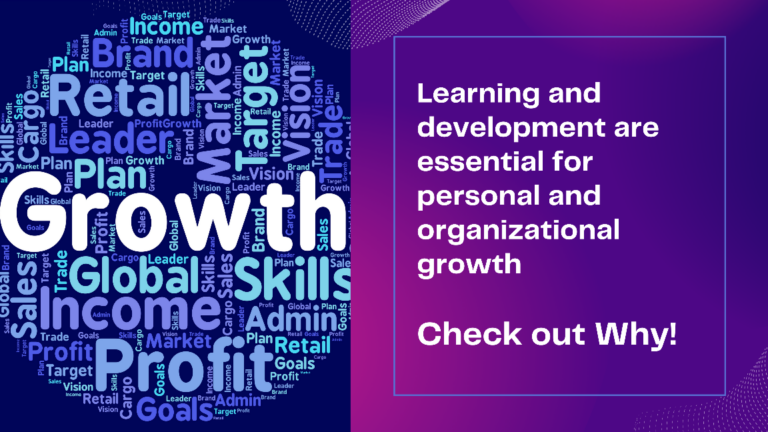Learning and Development: An Integral Part of Every Corporate Environment
Steve Jobs
In today’s rapidly evolving business landscape, the ability to learn and adapt has become essential for personal and organizational success. Imagine a world where the skills and knowledge you have today could become obsolete tomorrow – this is the reality for many professionals navigating the fast-paced demands of modern industry. No matter the level of formal education or professional development one has pursued, continuous learning remains crucial for staying relevant and competitive.
Learning and Development (L&D) have increasingly become vital to the success of businesses. As the speed of business accelerates, so too does the necessity for individuals and organizations to keep pace with changes. Prioritizing L&D not only enhances individual skills but also drives continued business success.

Here are several reasons why learning and development are crucial and how they benefit both individuals and organizations:
- Enhancing Employee Skills and Competencies
In a corporate environment where technology and business trends are constantly changing, keeping up-to-date is essential. For example, if a company adopts new software, employees need training to use it effectively. Learning and Development (L&D) helps by offering formal courses, workshops, and online modules. Investing in these resources ensures employees stay skilled and knowledgeable, benefiting both their personal growth and the organization’s success.
- Driving innovation and creativity
A culture of continuous learning sparks creativity and innovation. When employees regularly engage in workshops on new industry trends, they are likely to generate fresh ideas and enhance existing processes. By supporting ongoing professional growth, a company encourages employees to think creatively and contribute innovative solutions, which helps the organization stay competitive and motivates employees to actively drive progress.
- Enhancing Employee Engagement and Satisfaction
When employees perceive that their development is valued both personally and professionally, they are more likely to be engaged with and satisfied with their work. Engaged employees tend to be more productive, committed, and to stay longer in the organization, reducing employee turnover while saving the costs associated with turnover.
- Preparing Leaders to Lead in the Future
In terms of organizational leadership development (L&D) programs, it is important for organizations to have systems in place to identify and develop tomorrow’s leaders. Organizations can build a talent pool for leaders through L&D programs that train employees for a leadership position or that offer developmental opportunities for identified leadership candidates. Succession planning is then intended to provide stability and continuity as the organization grows and develops talent for critical roles within the organization.
- Improved Organization Performance
Investments in L&D support a more knowledgeable and skilled workforce, which leads to organizational performance. Emerging from relevant L&D opportunities, employees are positioned to experience growth and as a result, contribute toward meeting their goals as well as the organization’s goals.
- Attracting and Retaining the Best Talent
Organizations in a competitive labor mark will want to attract the latest and best talent. These recruits look for organizations that support professional and personal development. As noted, organizations with a strong L&D program can be viewed as a competitive edge when attracting and retaining qualified individuals to fill professional employment opportunities. An investment in employee development signals engagement in future employee opportunities as well as potentially retaining those individuals engaging in learning leaders.
- Adapting to Market Changes
The business sector is always changing and organizations must adapt quickly to remain relevant. Learning and Development is vital in enabling employees to understand and respond to changes. Training related to new technology, market trends, and best practices ensures an agile workforce to respond to changes in the market.
- Developing a Culture of Learning
Developing an environment of continuous learning within an organization supports continued personal and professional development. A culture of learning encourages employees to be inquisitive, share knowledge, and collaborate with others. The collective mindset leads to an environment of creativity and innovation where learning is celebrated on a daily basis and through organizational processes.
Conclusion
Learning and Development is not simply a role in organizational structure, it is key strategic enabler. Companies should invest in Learning and Development to develop skills, innovation, engagement, future leadership, performance, talent acquisition, and adaptability to changing market conditions to develop a learning culture. As businesses continue to change, Learning, and Development is the strategic enabler to ensure that an organization remains relevant and able to meet new challenges as they arise.
By – Monika Ranjan